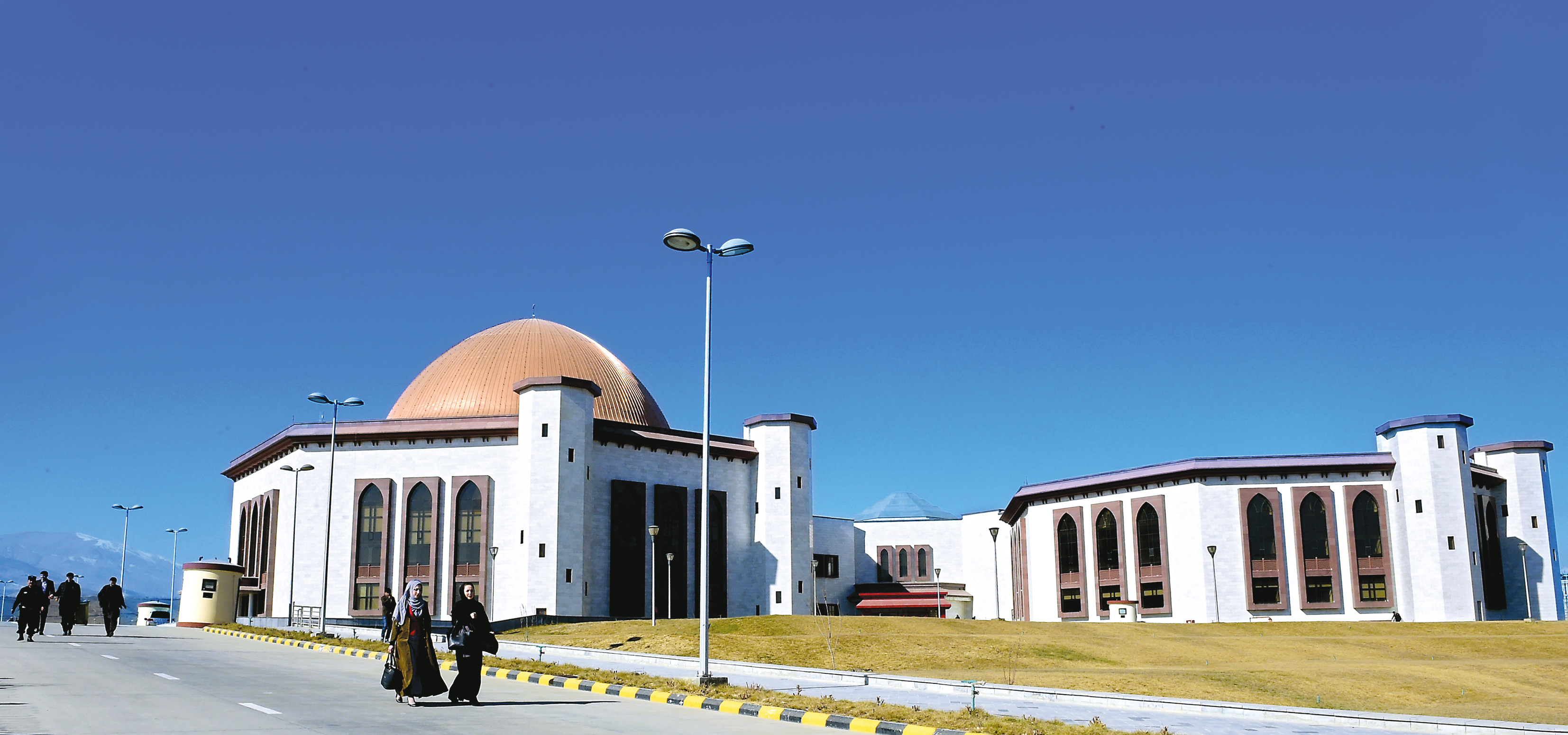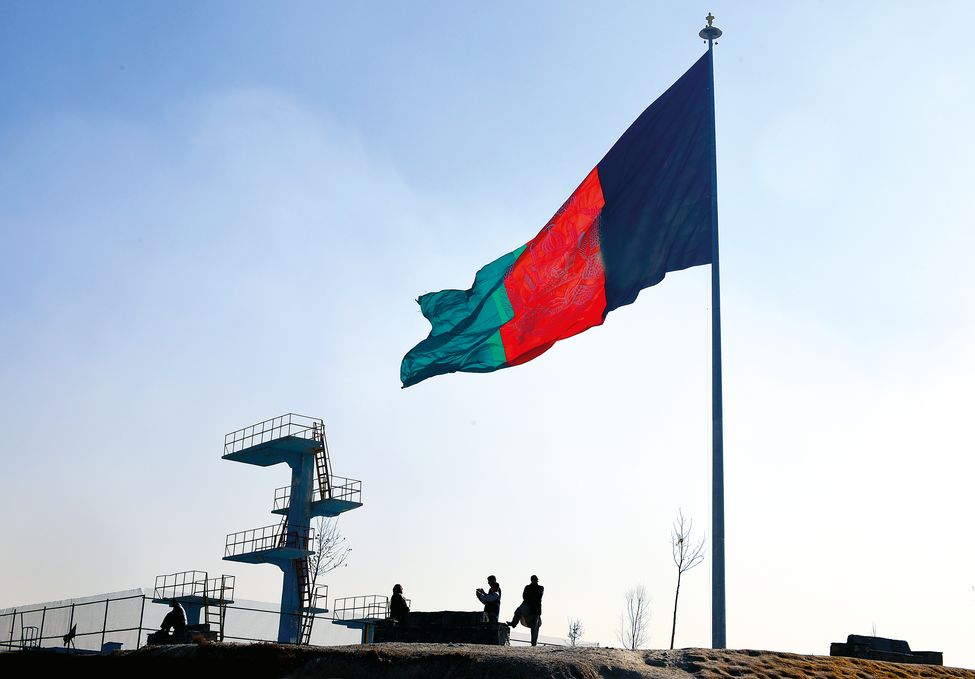We were on a hilltop overlooking the Bagh-e-Babur (the mausoleum of Mughal emperor Babur), taking panoramic shots of Kabul city, when a man on crutches hobbled up.
The entire hill was covered with tenements of internally displaced people, just the kind of rough area we had been advised to keep clear of. This man made us uneasy. He began talking to our interpreter. When he learnt we were Indians, not Pakistanis, his expression softened. He settled himself on a low wall, took out a flute and began playing for his “Hindustani dost”. The notes of Neele gagan ke tale, dharti ka pyaar paley (Beneath the blue sky, the love of the earth blossoms) an old Hindi film number, filled the air. In a city where bomb blasts, fidayeen strikes and rocket attacks are everyday events, the song seemed rather ironic. The man had lost his vision and a leg in a mine blast when he was a youngster. But this wasn’t time for bitter recollections, this was an occasion to express love for a country Afghanistan adores.
Used to people rolling up their eyes at Indians in other countries, this welcome in Kabul was surprising, and very warming. The love hasn’t come overnight; it is the culmination of a carefully nurtured foreign policy. Over 40 countries have a presence in Afghanistan, either bringing in troops or aid, or both. None have struck the heart of Afghanistan the way India has.
India has steadfastly refused to send troops to fight the war there. Its focus, instead, is infrastructure and capacity building. The Indian stamp is visible all around the country, whether in the form of big ticket government initiatives like the recently inaugurated Salma Dam and the spanking new Parliament building, or in the soft diplomacy furthered, rather unintentionally, by Bollywood. The entertainment section of newspapers like Afghanistan Times is full of Bollywood gossip, and Hindi soaps have an ardent following.
Politician-businessman Navin Jindal’s Flag Foundation of India gifted the country its largest flag in 2014; it flies majestically atop a hill in Kabul, on a 207-ft high flagpole. “Our flag, India gave us,” say locals. When it comes to optics, India scores a bullseye.
 Diplomatic move: The new Afghan parliament built by India | Sanjoy Ghosh
Diplomatic move: The new Afghan parliament built by India | Sanjoy Ghosh
The Indira Gandhi hospital for children is among the oldest in the city, built with Indian aid in the 1990s and rebuilt in 2004. It is testimony of how far back India began investing in Afghanistan. “India’s external policy team is professional, it took a long-term view. It invested in education, trained scholars, many of whom are now in important posts. They will not forget India,” said Dr Fazlullah Mohammadi, director, National Disability Institute.
The institute, in 2015, signed a deal with the Bhagwan Mahavir Viklang Sahayata Samiti, a Rajasthan-based charitable organisation, to train Afghans in manufacturing the Jaipur Foot, an affordable, lightweight prosthesis. “Every year, 34,000 people lose a limb due to war. Donor funding is dwindling, international centres are closing down. But India is teaching us self-reliance,” he said. Another small, but significant effort in helping the country stand on its feet, or in this case, Made in Afghanistan prostheses.
While the west is stopping aid, Indian investments are actually increasing. In addition to the 1,000 scholarships India provides annually, this year, there will be 500 more for children of martyred Afghan personnel. Last September, India launched fresh batches of community development projects including housing and roads. “This summer, we should begin work on the Shahtoot dam, which will benefit two million people in Kabul,” said an official at the Indian mission.
Some days ago, the first consignment of wheat that India sent through the new Chabahar port in Iran finally reached Kabul. Its arrival was celebrated almost like a minor festival. This sea route is significant as an alternative to the land route via Pakistan. Recently launched air cargos bring Afghanistan’s fresh fruits into the markets of India. The initiative was kickstarted after Pakistan began holding up supply trucks at Wagah for days, thus spoiling the perishable cargo.
The historical and cultural ties with India were once summarised by former president Hamid Karzai with the lines: ye mulakat ek bahana hai, pyar ka silsila purana hai (these meetings are but an excuse, ours in an old love affair). India’s present day rage against medieval raiders from Ghazni and Ghor finds no resonance on the other side of the Hindukush; Alaudin Khilji’s “villainy” isn’t discussed in Kabul. There, it’s only love.
 Flying high: The country’s largest flag, gifted by the Navin Jindal’s Flag Foundation of India, on a 207-foot flagpole | Sanjoy Ghosh
Flying high: The country’s largest flag, gifted by the Navin Jindal’s Flag Foundation of India, on a 207-foot flagpole | Sanjoy Ghosh
It helps, says Mohammadi, that India and Afghanistan do not share a border, and thus, have no territorial squabbles, unlike Pakistan. “We will never accept the Durand line” says one graffiti in Kabul. The writing on the wall is clear, literally.
If India is Hero number 1, Pakistan is top villain. “Pakistan exports terror” is what almost every Afghan believes, from the pomegranate juice seller to the president. In fact, even before any group claims responsibility for an attack, the government immediately points fingers at Pakistan. “Don’t even mention that country, see what it has done to us,” said Mariam Atahi, 30, a communication expert with Save the Children. Mariam, like many millennials, grew up a refugee in Pakistan during the Taliban time. Any sweet childhood memory of a land that was once home has been expunged by vitriolic hate.
Recently, some Pakistani clerics issued a fatwa against suicide attacks. Afghanistan was outraged. President Ashraf Ghani acerbically noted that this should apply for all countries, indicating that Pakistan couldn’t have double standards for its people and the rest of the world. For days, radio channels discussed the issue, with callers accusing Pakistan of making the statement under pressure from the US, and that it was all lies, anyway. Nothing that Pakistan does can be good, is the verdict in Kabul.
Afghans look at China, too, from the Pakistani prism, and are therefore wary of the Asian giant. Though China, too, has helped majorly with aid, its contributions haven’t grabbed eyeballs or won hearts. It hasn’t leveraged any cultural connect. In fact, its problem with Ughyurs actually comes in the way of people-to-people ties with Afghanistan. China had renovated the Jamhooriat hospital in Kabul some years ago, but media reports about shoddy construction failed to win it the brownie points India gets.
China has interest in mining in Afghanistan. The Logar province near Kabul is rich in copper, a mineral China covets. But despite years of planning, the mining hasn’t begun. The area is disturbed and it hasn’t helped that the Mes Aynak region, demarcated for mining, turns out to be rich in old Buddhist relics. Afghanis fear another heritage site will be destroyed. This, notwithstanding China’s own Buddhist leanings.
The march of China, however, cannot be ignored. Afghanistan is watching China’s One Belt One Road initiative with interest. Such connectivity can only be beneficial to them, too. The proposed China Pakistan Economic Corridor (CPEC) also holds promise for Afghansitan. “Unfortunately, this land has become the site of many proxy wars. There are so many rival countries here, US-Russia, Saudi Arabia- Iran, India- Pakistan/China. Is it surprising that we have trust issues?” asks Mir Abdul Wahed Hashimi of Inter News, a media capacity building and research organisation.
For the present, India has an edge over others. But in a country of incessant upheavals, the tide can turn any time.






